YOUR CART
- No products in the cart.
Subtotal:
$0.00

While working in the world of high fashion, Jenny McIlhatton was exposed to many exciting and extraordinary ways of working with fabrics. And experimental fabric manipulation and embroidery now play a key part in her art practice.
As a self taught textile artist, Jenny’s aim is to tell stories, heal trauma and reach for a better world. Using hand stitch, she explores personal experiences and mythology, while commenting on current social and political issues.
Sustainability is an important part of Jenny’s practice. To create her figurative and abstract artworks she uses waste fabric from luxury fashion alteration services as well as surplus textiles from garment factories.
In 2021, Jenny founded the community collaboration Rip it up, Start again. This pandemic project brought together 85 people to sew and share stories in a sustainable and creative way. Becoming the custodian of these precious stories, Jenny gathered this collection of mini artworks into a community quilt; a record of this unique moment in time.
Tell us about a favourite piece of your work…
Jenny McIlhatton: My community project, Rip it up, Start Again, is the most rewarding thing I have ever done. It’s a patchwork quilt, made entirely from recycled fabrics which had been formed into small artworks by 85 people.
It was created at a time during the pandemic when we were still in lockdown in the UK. So many people I knew were struggling with their mental health and I thought a small creative project could help people to work with their hands.
Contributors gained the added satisfaction of becoming part of a community, as well as recycling fabrics and thinking about textile sustainability. And their work contributed to a piece of art that would be used to raise money for Labour Behind the Label, a campaign working to improve conditions and empower workers in the global garment industry.
As I started to receive mini artworks back from people in the post, I also received letters and cards. People shared their inspirations, their enjoyment of the project and their experiences during lockdown.
I realised that I had the very important task of becoming the custodian of their stories. The community quilt, although designed to be about sustainability, was also a record of this unique moment in time.
What was your route to becoming an artist?
I have been working creatively with textiles since university, though for most of my 20s that was in the fashion industry. A desire to make my first artwork happened quite naturally at a time when I was doing a lot of work to improve my mental health.
Textiles have always been my language. They were the first thing I turned to and so I used them for my first work, a self-portrait. It was painful and confessional, but I found the process of hand stitching, working for hours at a time, was soothing and meditative.
The piece was not intended for show but it became part of an exhibition in support of the charity End Violence Against Women, born with the encouragement of a few friends and the help of two established artist friends. I was terrified before the exhibition opened. I sat on the end of my bed in tears and had to be bundled into a taxi. I definitely did not feel like an artist then.
I was totally unprepared for the reception of my work to be so positive. Following the sale of all the pieces from that first exhibition I decided to make more. There was no grand plan at that point, I just knew it was something I wanted to continue.
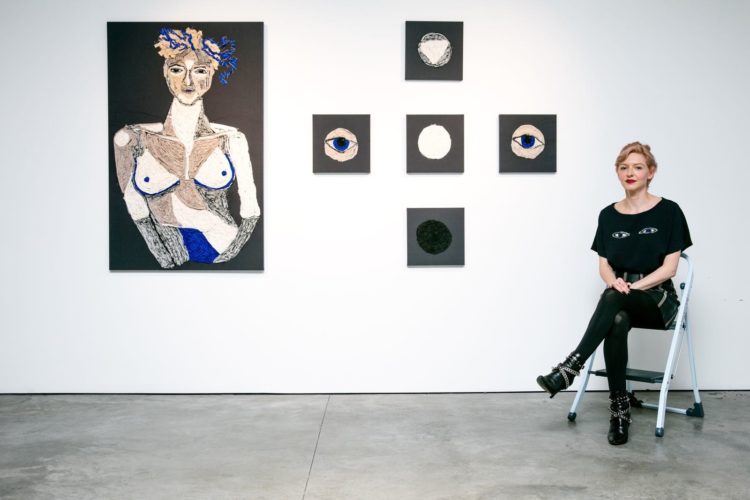
What techniques do you use in your art practice?
I mostly use hand stitched appliqué. I mix different methods of twisting and gathering to create texture. I like to explore how each fabric drapes and falls.
I don’t tend to use a lot of decorative stitches. Instead, I approach my needle and thread like some might a pencil or paint brush. I sketch and draw with the thread, working into some areas to add more texture. I work some pieces entirely in stitch as an automatic and meditative practice.
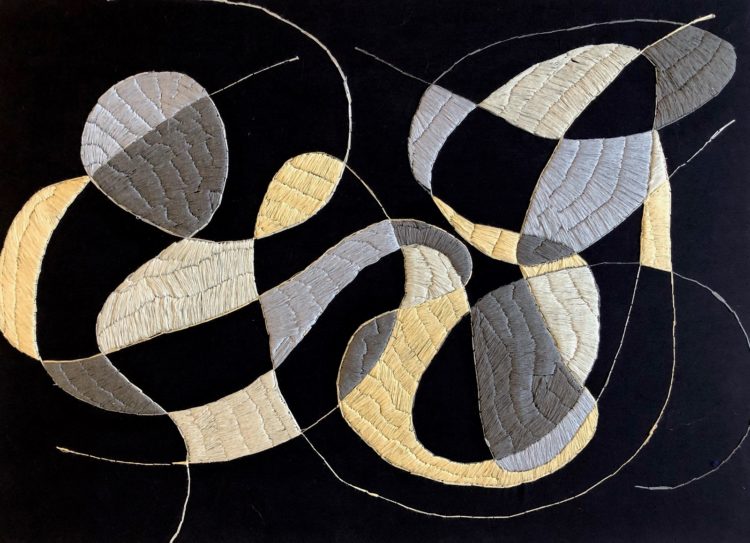
What is it about textile art that attracts you?
My first love was fashion. I expressed myself through my clothing and it soon became my life. As a child, I loved to watch my mum get ready for an evening out. She was a huge influence in my developing a love of fashion, colour and textiles.
I studied fashion and often created my own textiles for my designs. I worked in couture for Vivienne Westwood and took part in fashion fittings using incredible fabrics. During the five years I spent there I learnt so much about textiles. And while working for Yves Saint-Laurent I experienced their haute couture salon in Paris.
Growing up in Belfast in the 90s there was a distinct lack of art available for public viewing. I remember very clearly getting the train to Dublin, aged 16, to see a Francis Bacon exhibition. I stood in front of a huge painting that was so visceral it seemed to fill the whole room.
Watching the fashion shows of Vivienne Westwood and Alexander McQueen, demonstrated the power, performance and play that is possible with textiles.
All of this nurtured my love of textiles and their infinite possibilities for creating art.
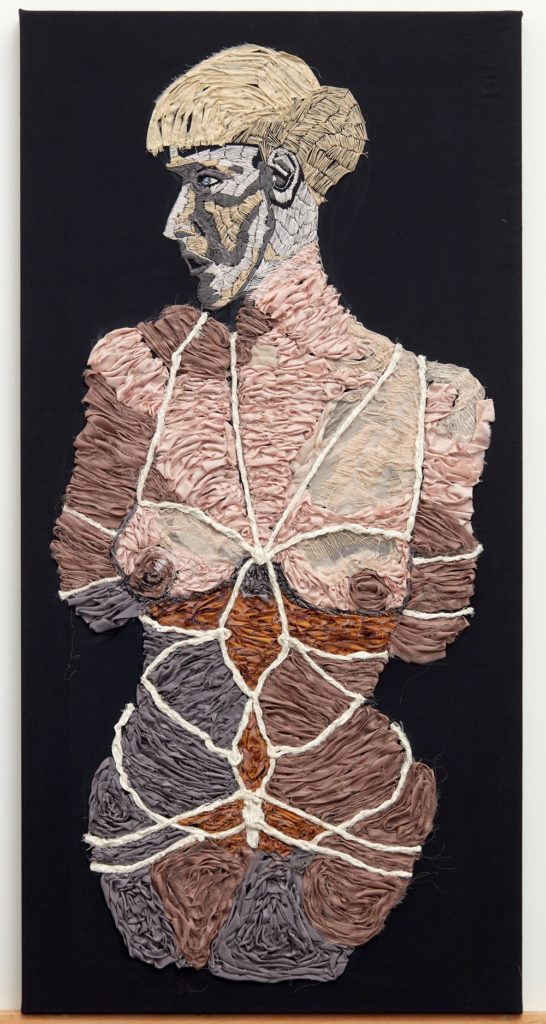
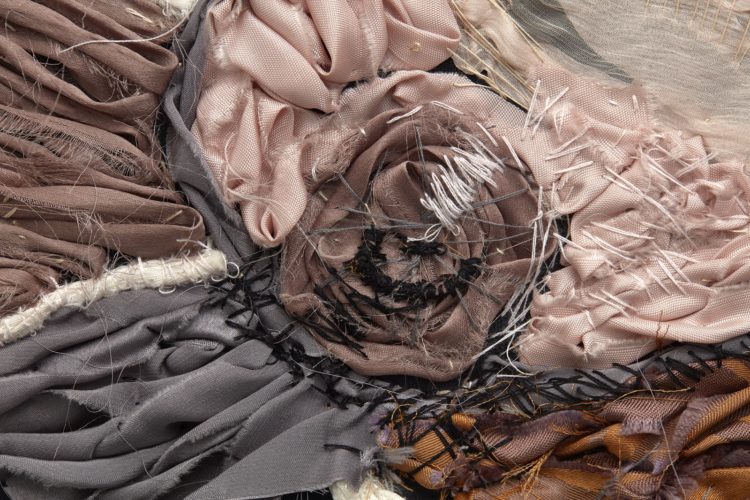
Tell us more about how you create your art…
Reading is always the first part of my process. I spend time researching and creating a character, forming ideas in my mind. Sometimes I will write notes or draw little symbols that come to mind. But often it’s held in my mind and turned over many, many times before I even get close to working with fabrics.
I sketch a small plan of how I hope the artwork will look. Generally, this notes where particular elements will be placed. Then I delve into my huge collection of recycled textiles, sifting through everything. I work on instinct, letting the fabrics speak to me. I’ll select materials with different colours and textures, and then I think about how to manipulate and apply them.
I sketch an outline on the background and start sewing. All of my artworks are completed entirely by hand. The larger works can take many months to complete. And the final step for exhibited works is thinking about how I will present it.
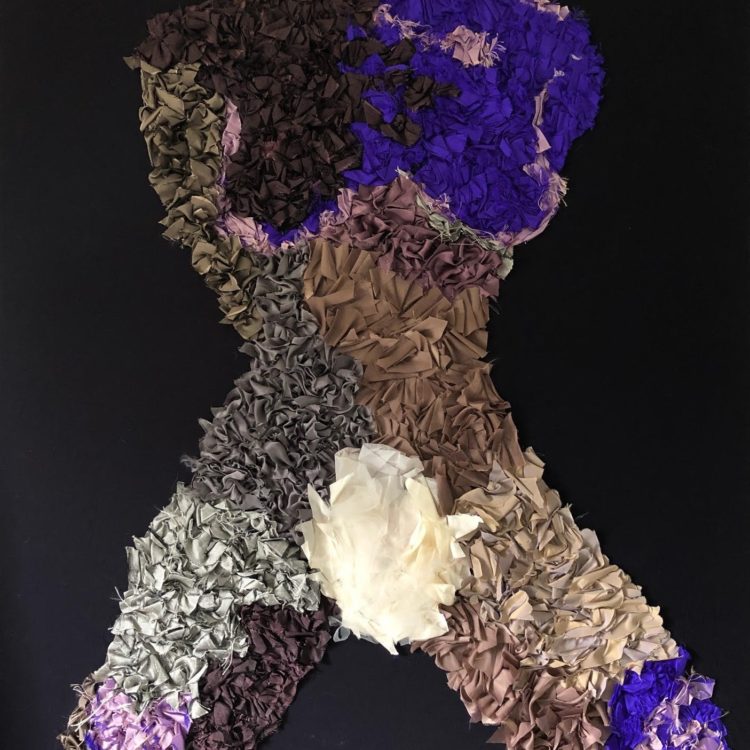
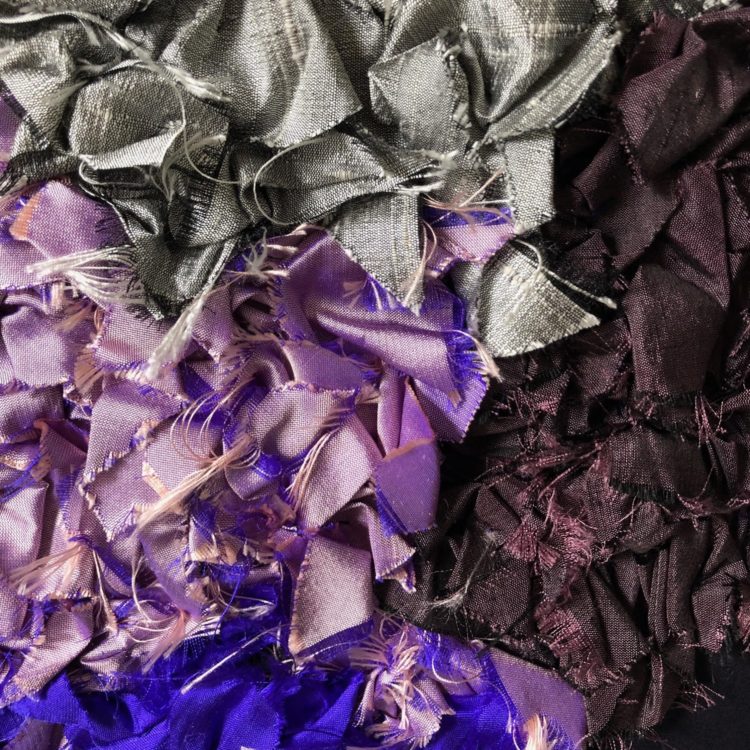
What currently inspires you?
I read books and poetry by a lot of classic and contemporary feminist authors, and anything featuring mythology and mythological characters. Also, I have a favourite podcast on Jungian psychology and a gorgeous book on Madge Gill by Sophie Dutton, both of which I come back to over and over again.
The history of embroidery and textile art, especially protest art, also inspires me.
The series of works I am currently working on started with some of the inspiring women in my own life as well as my research into iconic real or mythological female figures. Each piece is a thank you, showing my admiration for the sisterhood present in my own life.
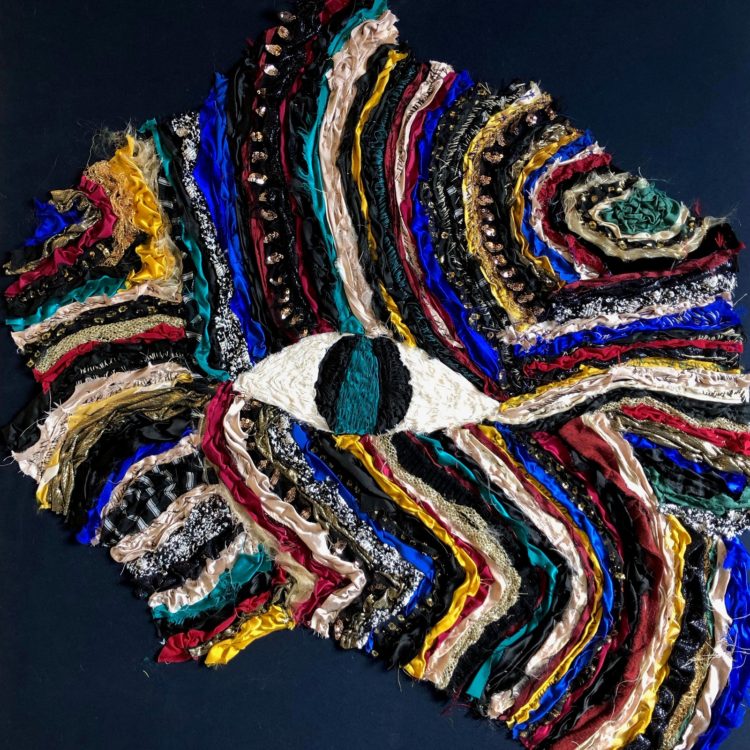
How do you see your work evolving in the future?
I feel that my work is moving away from the more literal figurative early pieces I created. It’s becoming something more abstract and symbolic.
I’m now thinking more about the spirit of the characters I am portraying, rather than creating a literal realistic render of them. The female figure will still often be a starting point but she is becoming less recognisable.
After dedicating much of 2021 to my community project, I’m now concentrating on developing my personal practice. I also intend to make some textile sculptures. I’m excited to see how these will develop and inform my 2D practice.
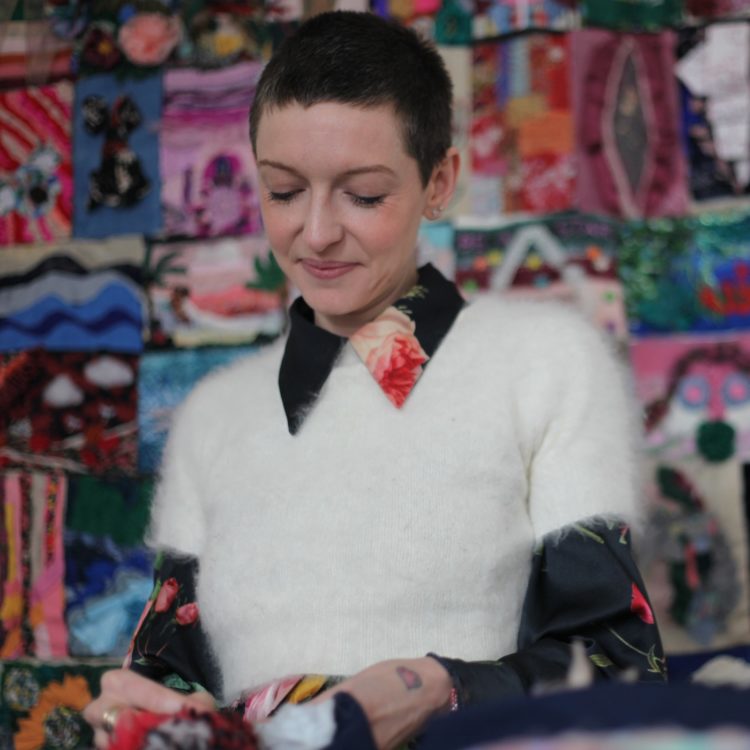
Jenny McIlhatton is a textile artist born and raised in Belfast, now based in London. She became an artist after many years of working in the fashion industry.
Known for her sustainable art practice, Jenny founded the project Rip it up, Start again, in 2021. This community project won an Upcycling, Art, Craft and Design award from De Montfort University and LCB Depot, and was long-listed for the Sustainability First Art Prize. Jenny’s work has been purchased for private collections around the world. Her exhibition Amygdala was featured in Wallpaper* magazine in 2019.
Website: www.jennymcilhatton.com/
Instagram: @jennyforevelyn
Jenny’s fabrics speak to her – do your materials guide your making process, too? Tell us more in the comments below.